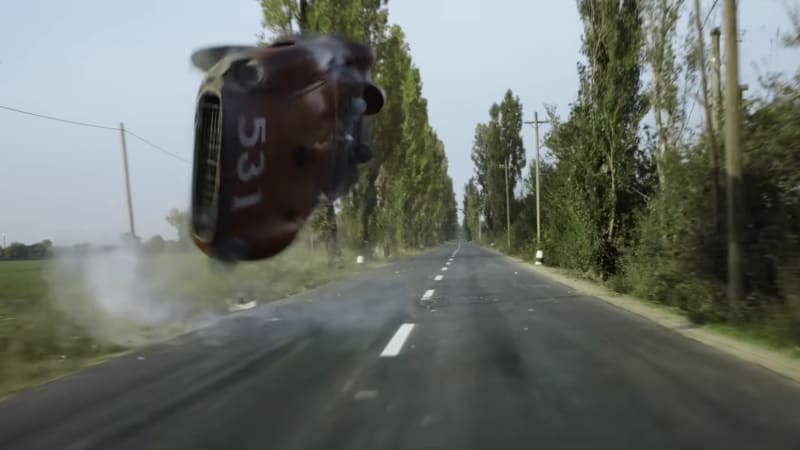Replica cars that crash and burn in 'Ferrari' look genuine — there were hundreds of real Ferraris, too

Of course, a movie titled “Ferrari,” for a certain audience, has to be less about a character named Ferrari and more about Ferraris.
Whatever your reaction to director Michael Mann’s long-in-the-works biopic about Enzo Ferrari, Ferrari’s love life and his obsessions, it’s the machines that to some will take top billing, and deservedly so.
According to a revealing report just published in Vanity Fair, called “The Secret of Ferrari’s Realistic, Terrifying Car Races — And Crashes,” it turns out that re-creating the vintage cars that crash and burn in the film involved an extraordinary challenge: Danny Triphook, the picture supervisor on “Ferrari,” ultimately sourced 393 vehicles for the movie, “a hoard that required its own similarly sized transportation infrastructure. We couldn’t drive these on the road to take them to set because of insurance. So we had to use 333 car carriers.”
Triphook employed the services of Ferrari Classiche, the brand’s in-house archive and restoration facility. They helped to verify which factory vehicles may have been on the roads and tracks in 1957, when the film is set. He also had assistance from major collectors, who agreed to loan him their vehicles, according to author Brett Berk.
The filmmakers also engaged Carrozzeria Campana, a 76-year-old, family-owned automotive fabrication and restoration shop in Modena, near where Ferrari and Maserati are headquartered. “They were asked to build nine replicas for the film: three Ferrari 355 Ss, two Ferrari 315 Ss, two Ferrari 801 F1s, and two Maserati 450S,” the story says.
The bodies were digitally scanned. Some were reconstructed in fiberglass and later rebuilt in metal for the scenes involving collisions. “Because when Michael needed a car crashed, he wanted to see the proper crash,” explains Rita Campana the granddaughter of the shop’s founder. “If you crash a fiberglass car, you just see the fiberglass crack. It doesn’t crash like you see with an aluminum car.”
Sound is crucially important in a film about motor racing, and director Mann “wanted to capture the sound of these cars at speed: accelerating, shifting, braking, turning. This required driving the cars in some simulacrum of the racing experience, on a closed course, while covered in microphones.’
“We had a couple in the engine bay, we had a couple up in the cockpit, and we had two sets of two on the tailpipes because that’s where the magic happens,” Tony Lamberti, the Academy Award-winning sound editor who worked on “Ferrari,” told Vanity Fair.
Lamberti and his team found clever effects to layer into the mix. “I use these guys in the former Soviet Republic of Georgia, and they have a lot of old metal, old machinery around,” Lamberti says. “So, like, the latch of an old aircraft door is used for the gear shift because I knew that it had a more vintage sound.”
Mann, who has managed through the years to merge comic-book art looks with incisively revealing dialogues in films like “Heat” and “Thief” and even as far back as the television series “Miami Vice,” is “a massive car lover,” Triphook told the magazine.
“He knows absolutely everything about cars. In some other films, I would have had the ability to say, ‘Oh, let’s do this or let’s do that because this car is better because of this.’ There was no chance I could do that because Michael knows everything.”
Here is the article referenced above; a subscription may be required for access. The film is scheduled to open in theaters on Christmas Day. Here is one published review.







